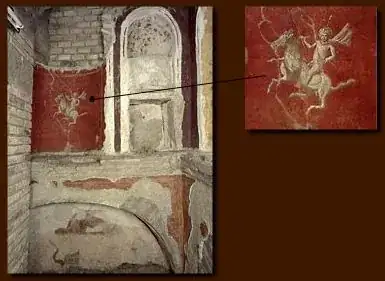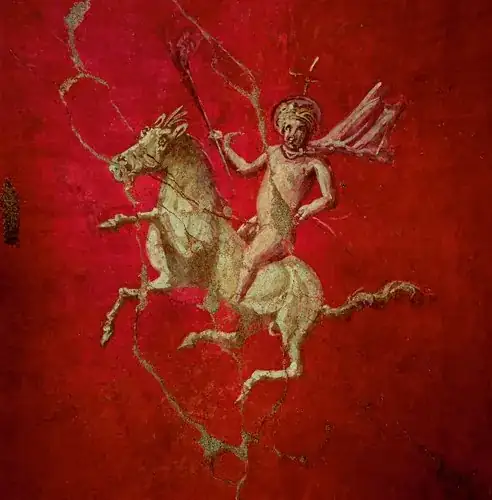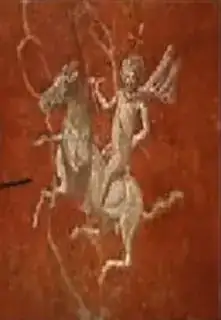That's a wall in the mausoleum
Cultural Travel Guide's article First century Roman mausoleums under Saint Peter’s Basilica, citing the Vatican virtual tour (a mausoleum itself — Flash Player is dead and buried as of 2021), describes Tomb U as follows:
A reduced tomb, you can only see a small detail of a painted “light-bearer”.

I believe that there is some sort of inscription labeling it, though the details are scant.
A better image can be found in Die Nekropolen im Vatikan:

What is a "light-bearer"?
This is where the confusion sets in. Obviously, they did not use the English phrase "light bearer" but rather something else. The only option that makes sense in context would be the Latin equivalent of that phrase: Lucifer. While we use the word "Lucifer" today to refer to the devil, that's not how it was used historically.
Catholic Answers says this:
What does the word lucifer mean?
It’s a Latin word derived from the roots lux (light) and ferre (to carry).
It means “light bearer” or “light bringer,” and it was not originally used in connection with the devil.
Instead, it could be used multiple ways. For example, anybody carrying a torch at night was a lucifer (light bringer).
[...]
So there was no connection with the devil?
No. In fact, it was used as an ordinary name. In the 300s, St. Lucifer of Cagliari was a defender of the deity of Christ and of St. Athanasius against the Arians.
Another bishop in the 300s—Lucifer of Siena—also bore this name.
The article Vatican Excavations and the Tomb of Peter says that the figure depicted is, in fact, bringing the light:
[...] U is similarly adorned, showing a peacock strutting between two trees and a small figure, Lucifer, his head surmounted by a star, and with a torch.
See also


